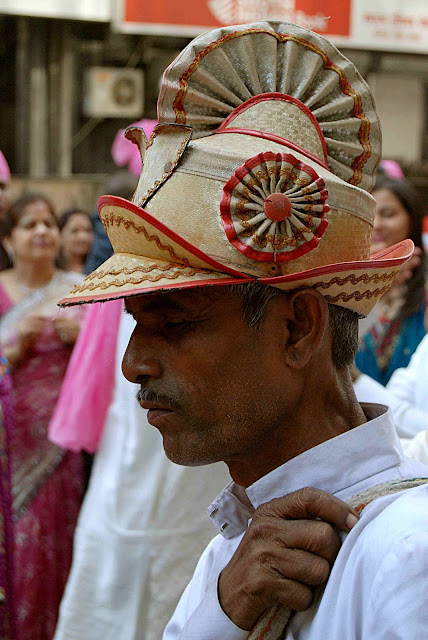Chimbai village is one of the original fishing communities that the Portuguese found when they first settled the southern end of Salsette Island in 1534. Lying just to the north of the seven islands that were later joined to form Bombay, the houses and tiny lanes that wander down to the Arabian Sea speak of earlier times.
Goats amble amongst the local fish and food vendors who set up on the pavement at meal times.
The heavy furniture for one of these stalls is being carefully hoisted high onto a head for transportation by these two women in brilliant saris.
Goats amble amongst the local fish and food vendors who set up on the pavement at meal times.
The heavy furniture for one of these stalls is being carefully hoisted high onto a head for transportation by these two women in brilliant saris.










































